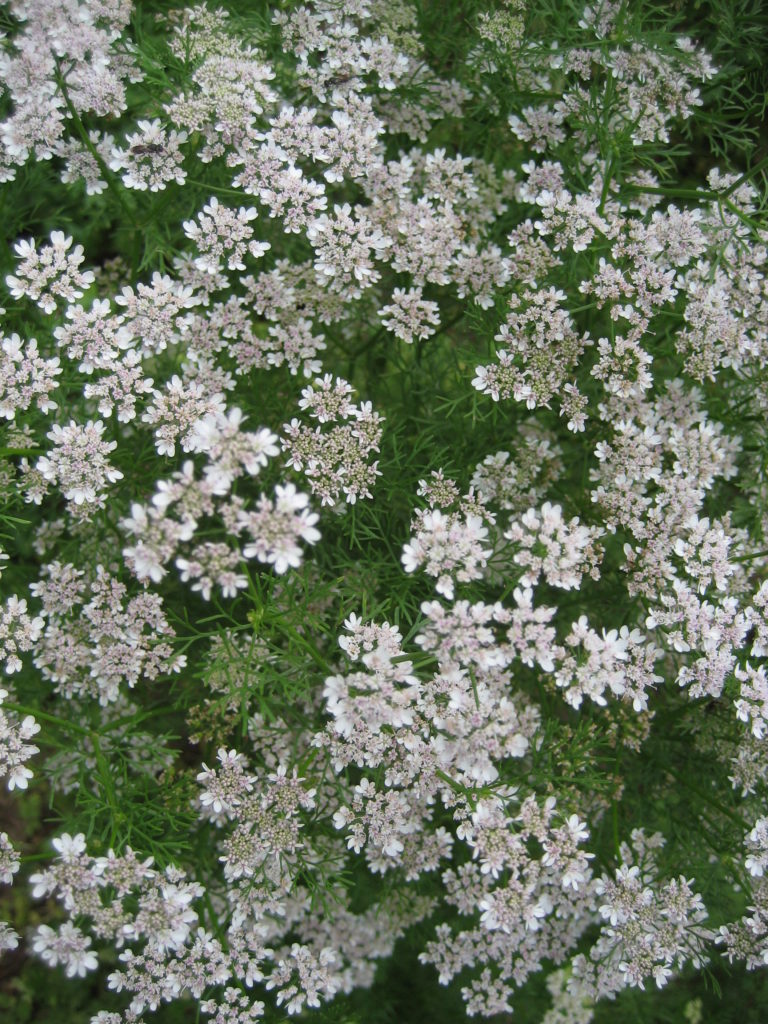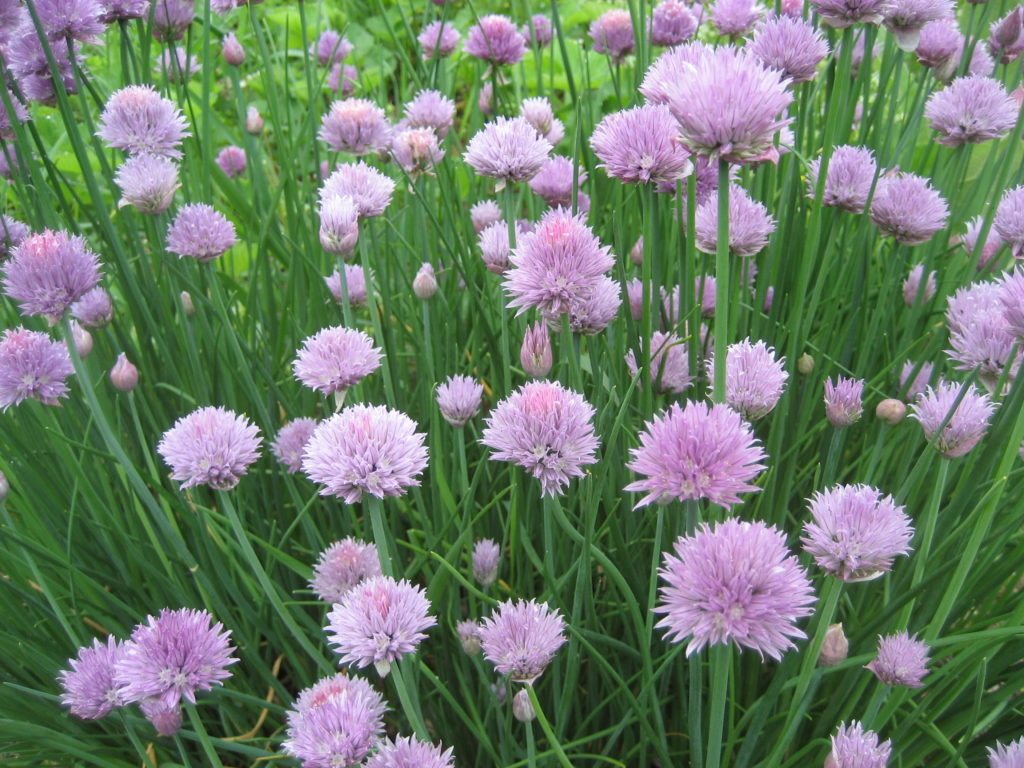
7 Ancient Herbs For Modern-Day Kitchens
The very word 'herb' promises greenery. In fact, in Latin, the word ‘herba’ refers to grass or green crops. Of course, the use of culinary and medicinal herbs existed well before the Romans. Humans have had the pleasure of building relationships with—and knowledge about—plants since well before the advent of civilization and agriculture. While many herbs are still known today for their medicinal properties, including Echinacea, Catnip, and Anise Hyssop, today we're going to focus on those herbs used mainly in the kitchen. Find out what kind of flavor and fragrance each of these herbs brings to various dishes, and discover our top growing and harvesting tips for each variety. Since herbs can take a while to get started from seed, particularly the perennials, now's the perfect time to get to planting your perfect culinary garden!
Here are our top picks for unbeatable kitchen herbs:

1. Basil Bouquet (annual)
With over 100 basil varieties in the world, we can never agree on a favorite. So, we’ve chosen this beautiful and delicious mix of Genevose, Lemon, Cinnamon, Purple, and Thai basil varieties. The uses of basil feel nearly infinite – and its diversity is a good example of how food culture has influenced backyard plant breeding. Pesto is a regional dish from Genoa, Italy. Genovese gardeners selected basil for the qualities they felt made the best pesto, especially the ability to pesto, or to pound, the leaves. Thai basils, on the other hand, were bred for their strong, rich aromas that did not diminish during stir-frying. We’re sure you’ll find a basil for any dish with this mix. And for those of you who are still curious about the many wondrous basil varieties, see the full low-down in our previous blog post, All About Basil(s)
Basil is great in the garden and in containers indoors and outdoors. For gardens, direct sow after frost, or 1 month before last frost indoors and sow in one month successions for fresh basil all year long. Harvest the tallest growths in order to prevent the basil from going to seed – the flavor becomes too strong once the plant has gone to flower.

2. Parsley (annual in cold-winter climates, biennial in temperate climates)
The most popular herb in the Western world, parsley has a bright, unmistakable tang that unites and amplifies the flavors of any dish. Of Mediterranean origin, parsley is now grown nearly everywhere. We love parsley in soups, hummus, and tabbouleh, but it's really a gorgeous addition sprinkled atop nearly any plate. While we think both parsley varieties belong in the kitchen, some say that the Italian flat leaf variety is superior for cooking. We’ll leave that for you to decide!
Grow in the garden or in containers indoors or outdoors. For gardens, direct sow after last frost or start 8 weeks before last frost indoors. Be patient! Parsley is an incredibly slow germinator (2-3 weeks) but is fast and easy to grow once it has sprouted. Plants prefer full sun but are tolerant of partial shade. Harvest outer leaves, and allow new inner leaves to mature for continual harvest.

3. Dill (annual)
Beyond its pungent flavor and culinary versatility, dill has a long history of medicinal use. Ancient Egyptians referred to dill as a soother; gladiators believed it imparted courage; churchgoers felt the seeds imbued alertness; and villagers considered dill a protective charm. Today, we love dill for its place in edible landscaping, container gardens, and, of course, pickles! All parts of the plant – leaves, stem, flowers, and seeds – can be used to impart flavor to dishes.
Grow in the garden or in containers indoors or outdoors. For gardens, direct sow around last frost, or indoors before last frost and then transplant fairly quickly. Sow every 3-4 weeks for the highest quality fresh leaves all season. For best dry leaves, harvest before the umbel (Latin for umbrella) flowers form. For throwing in pickles, the umbels at the bud stage are ideal.

4. Cilantro (annual)
This herb loves creating confusion! It looks similar to parsley and is known by several names – cilantro, coriander and Chinese parsley. If you’re travelling the world, at least in your cooking, this is a fantastic herb for you. Popular in Mexican and Indian cuisine, its tender, sweet taste elevates the flavor of nearly any dish—unless you’re one of the unlucky ones genetically cursed to find cilantro’s flavor soapy and intolerable! Even if you’re one of these, you can still enjoy the seeds (known as coriander) by grinding them up and using them as a spice.
Grow in the garden or in containers indoors or outdoors. For gardens, direct sow in succession every 2 weeks from about a month before last frost until early fall. Succession sowing is all important with cilantro; it bolts after only a couple weeks of harvest. So, harvest confidently, even greedily, lest plants bolt before you get your share.

5. Chives (perennial)
The smallest of all the Alliums, chives are considered by some to be the only species of Allium native to both the Old World and the New. The sulfur smell of the plant is said to repel garden insect pests while the soft, round, lavender flowers attract beneficial pollinators and are edible – a romantic addition to salads, and vegetable dishes.
This clumping onion survives winter in the Northeast and often blooms in early May. It thrives in borders and containers indoors or outdoors. For gardens, start seeds indoors, about a week before outdoor soils can be worked, and transplant outdoors in clumps when chives are about 3" and the soil can be worked. Alternatively, direct sow outdoors in a weed free area as soon as soil can be worked. Chives will grow slowly at first, but they are extremely hardy and fast growing once established. For best culinary quality, cut chives every week or two once they are established.

6. Common Sage (perennial)
The name "sage" comes from the Latin verb salveo, meaning "to heal". This is because the plant is said to be able to heal almost everything. But the word sage also refers to wisdom, and quite often the wisdom of age. If you would like to grow wiser with age, grow with sage by your side in the garden. It will return every year: older; wiser; and more generous. Sage puts on a lot of growth in the first year and in the second, it will delight you with beautiful purplish-pink flowers. The culinary uses are endless: fried sage on roasted squash, mixed in with soups and pastas, delicious with caramelized onions on pizza or even just on their own fried in butter! Just a few plants will provide enough sage to eat fresh and dry for an entire year.
Don’t be intimidated by this perennial: it’s extremely easy to grow from seed and, as a perennial, it is best suited to more permanent homes in the garden or containers. Start indoors 6-8 weeks before last frost. Sow 1-2 seeds per pot. When there are 1-2 sets of leaves, thin to 1 per pot then transplant outdoors. Sage prefers full sun and well-drained soil. It is normal for a few plants to die over the winter in areas with cold winters, so protect with mulch if you are concerned about this.

7. English Thyme (perennial)
Thyme is a versatile and highly useful herb that weathers nearly all conditions. It can be harvested until buried in snow and then as soon as the snow melts in spring. Thyme was long believed to be an antidote for poison and a preventer of plague and strongly associated with courage – a perfect plant for warding off unwanted dangers in the garden. And, of course, it is irresistibly delicious – strip the leaves from the woody stems and sprinkle them in soups, on roasted root veggies, or in Caribbean stews, where this herb plays a starring role.
Start thyme indoors 8 weeks before last frost by seeding clusters of 10-15 seeds together on top of the soil. Keep moist, but not wet. Transplant outdoors when seedlings are 3" high, spaced at least 6" apart. (Thyme does not mind some crowding.) Harvest the upper green growth and prune back flowering stalks to promote more green growth.
Did we miss one of your favorite kitchen herbs? Let us know in the comments!






